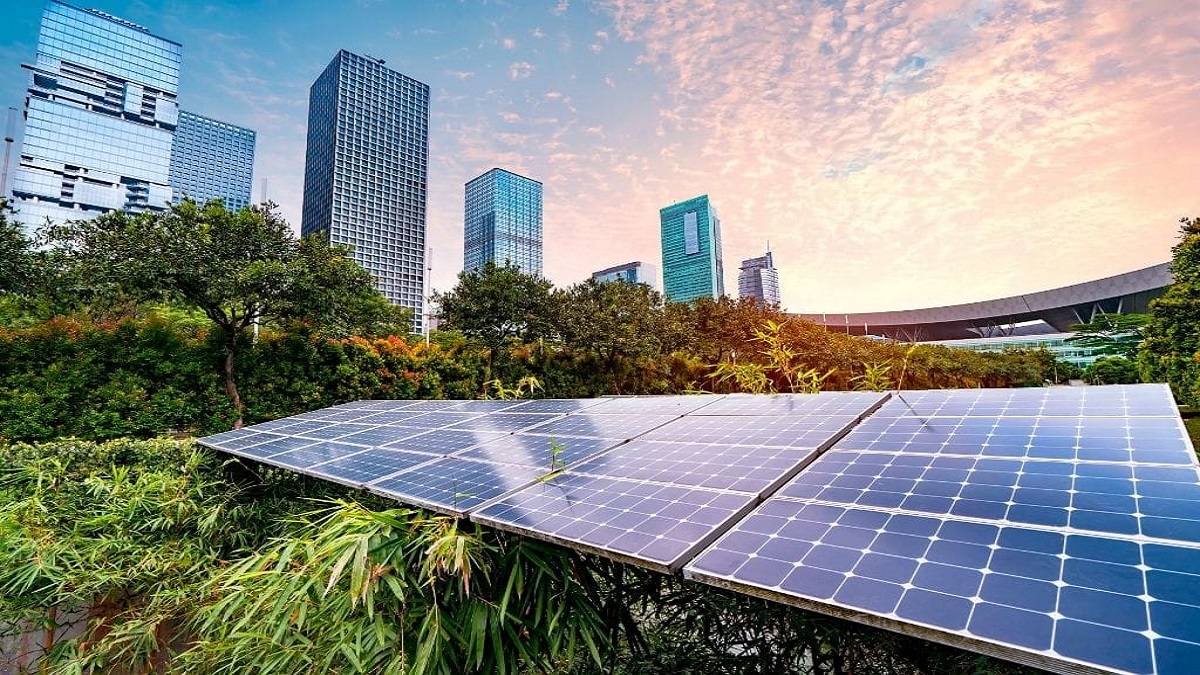Urbanization normally differences to increase proportion of the population, which is living and working in urban areas. It is often seen as a problem as people are migrating to loud cities in search of economic opportunities. There for urbanization is strongly associated with economic success as well.
Issues of Urbanization
- Future of Urbanization and economy:
Worldwide, we have seen that all the rich nations of the world are highly urbanized, and all the poorest nations are comparatively rural.
The most successful economies in Africa, Asia and Latin America are rapidly urbanizing, whereas those economies which are not very successful, are seen to be not urbanizing all they are organizing very slowly. Urbanization on the other hand also bring very strong, developmental changes and advantages. Degrees is the cost of living for example, it lowers the unit cost of providing piped water, sewers, healthcare education, and emergency services.
- Future of Urbanization and rapid population increase:
Around the world people are moving from place to place, and the world is undergoing the loudest wave of organization, which one has never seen before of urban growth. Currently, more than half of world’s population is living in urban centers and this is increasing at the rate of 1.5%. This is a bit urbanization has coupled with population growth to change the landscape of human settlements. It avoids a great significant risk to people, living conditions, the environment and development as well.
- Water and sanitation:
With the increase in urbanization rapidly, and as a result, there are many people left who are deprived of save water in adequate sanitation. This is due to the fact that the continuous increase in population there is no infrastructural development as compared with the rapid rate of urbanization. Consequently, the people who urbanize this cough, severe health issues such as waterborne diseases like diarrhea, which is one of the leading causes of death among children, less than five years of age.
Read More: Urbanization and Growth in Pakistan – About Pakistan
- Slum formation and informal settlements:
Due to the failure of urban planning and infrastructure development in the face of rapid urbanization and enormous population increase, there is a large number of slums, an informal settlement in cities around throughout the world. People living in the slums and informal settlements suffer from poor sanitation for housing, lack of access to safe water and sanitation, overcrowding, and a constant risk of being homeless. Furthermore, due to political apathy there is a constant risk and urine problems for these people living in slums.
- Urban sprawl:
A form of urbanization can be determined both by communities and by the environment, there are more people, which have started moving from city centers and destroy wildlife habitat and as a result introduce in music lines in animals. Furthermore, there is a huge dependency on vehicles which intensifies noise, pollution, traffic evolution, and reduces the potential for physical exercise.
Urban sprawl, a form of urbanization, can have negative impacts on communities and the environment. As more people move away from city centers, new construction can destroy wildlife habitat and bring in invasive plants and animals, amount, air pollution increases, and mobility decreases.
- Urban migration:
One of the major causes of the emergence of economies in rural urban migration, which is motivated by usually social political, economic or environmental causes. Consequently, there is a huge influx of people from areas into cities which can exacerbate different problems such as poverty, slum formation, disruptive, neighborhoods which usually cause notorious behavior in people increasing criminal activities.
Europe and Asia, host around 87 and 86 million international migrants, respectively, and rising 51% of the global and the national migrant stock, according to the world migration report. This is followed by North America with almost 59 million international migrants’ aisles, 21% of the global migrant stock, and followed by Africa, which is at 9% Latin America and Caribbean at 5% and Oceania at 3%.
- Urbanization and social development:
Urbanization usually supports a more direct engagement between government and the citizens. As a result, the government is more participate, responsive and accountable due to urbanization.
Sustainable Development And Future Of Urbanization In Pakistan
In south Asia, Pakistan has the highest rate of urbanization, according to the centers of 2017. 36.4% of population in Pakistan lives in urban centers. Pakistan is located in south Asian region and it is the 5th most populous country in the world. According to the census of 2017 its population is around 22 million and has grown at the rate of 2.4% every year. In Pakistan, the urbanization has been at its peak and urban population of Pakistan has grown almost at the rate of 2.7% per year and it is estimated to be around 75.5 million.
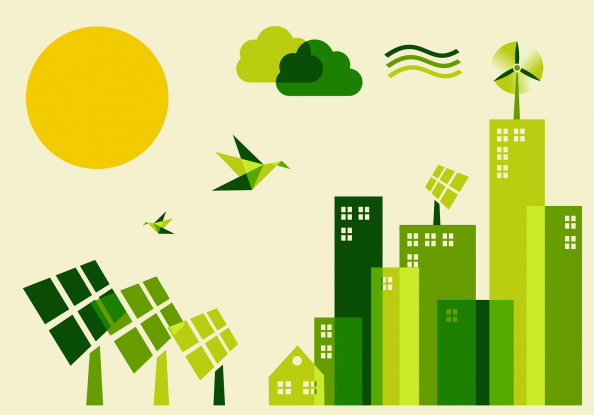
With increasing urbanization and people migrating to the city is the reason why urban housing demand has also increased, and it is rise up to 350,000 units per year. Out of all these 62% is for those people belong to lower income groups and 25% for those who belong to lower middle-income groups and 10% is only for higher and upper middle-income groups.
Read More: Catastrophic impacts of climate change around the World – About Pakistan
Issues Due To Unplanned Urbanization In Pakistan
With all these inflows, there is lack of almost 2 lakh units, and this is the main reason which causes the formation of informal settlements of different kinds. This informal settlement can be occupied and subdivision of government land which are called normally as kachi abadis and squatter settlements and by the informal subdivision of agricultural land on the chair, different areas of urban settlements.
For the past two decades, this increasing demand is greatly being met by densification of already existing low and lower middle-income settlements. Throughout the world, urban migration is taking place at an unprecedented rate. This is due to the fact that the self-sufficiency model in village is not sufficient.
- Slum formation:
Presently the state in the government has no particular plans to deal with all the influx of migrants nor it is in the state to provide people with homes. Therefore, these internal migrants left with the only option of living in kachi abadis or due to the unavailability of land. It is becoming difficult due to increase in cost distance and inconvenience related to commuting.
- Unplanned densification:
As a response to all these problems, the low rise and low income, settlements near cities, and urban centers are gradually becoming high-rise coupled with all the physical and social problems of unplanned densification. In Pakistan, it is not a real site to see people sleeping under bridges, roundabout, pavements and open-air hotels especially in Karachi and large cities.
- Urban conflicts:
This can also lead to urban conflict as we can see that the politician developer nexus is making safe and get it communities for the elite and high class, people whereas the poor are left in the lurch. This is further segregating cities in the rich and poor areas, therefore increasing the urban conflict.
The people in low-income areas cannot pay electricity bill is due to the exorbitant rates of electricity. The people living in these areas also have to bear the brunt of power shortage which is less common in advantages groups.
- Solid waste management:
There is also a problem of solid waste management, which is more prevalent in slum areas. It can cause spread of a lot of hazardous diseases which are lethal for health. Now people also have to pay for the parking fee which was not the case almost a decade ago. Due to all these reasons, there is a decrease in the number of visitors to expensive parks as well. Furthermore, the government have also put-up heavy toll taxes, which makes travelling more expensive.
- Expanding suburbs:
There is an unprecedented expansion of urban centers with the absence of proper urban planning and implementation. Due to this increased urbanization, the future of sustainable development is in perils.
This urban planning is ending up valuable agricultural land and causing harm to the city, is the bleeding water resources and also causing pollution.
- Urbanization and environment:
What does urbanization have also destroyed geological formations forests in the children, insistence, causing floods in bringing about the rise in temperature, causing global warming especially in those areas, having high-density, informal settlements.
If care should not be taken this environmental hazard will be going to increase. There is a strong need to build a design technology, which is affordable for people of low income in order to deal with the effect of climate change.
Read More: Development of Pakistan: Failures and Successes – About Pakistan
Way Forward to Ensure Sustainable Cities and Future of Urbanization
- Land Reforms:
URC in Karachi has suggested that Pakistan is in the dire need of serious urban land reforms if it wants to get along with sustainable development and future of urbanization. The provincial governments are bringing about regulations and involvement of informal settlements.
However, finances are a great hurdle in the way of such changes, and even if they were available, they were not visible for social and political reasons.
Urban Planning and Management
Furthermore, Pakistan is also in dire need of urban planning and management in order to cope up with the urbanization and future of sustainable development in cities. Additionally, there is also a need for an update in the informal sector to bring about changes, which will be fruitful to control urbanization and its consequences.
To deal with the increasing urbanization and the future of sustainable development, there is a need for some sort of intervention to make formal and informal urbanization better designed and more affordable. There is a need of properly designed, infrastructure and enactment of legislation, through which the state can acquire the vacant land for people of low-income groups.
Millennium Development Goals (MDGs):
The UN drew up the Millennium Goals in 2000, eight aims to be fulfilled in fifteen years. These goals were:
- Eradicate extreme poverty and hunger
- Achieve universal primary education
- Promote gender equality
- Reduce child mortality
- Improve maternal health
- Combat HIV/AIDS, malaria, and other diseases
- Ensure environmental sustainability
- Develop a global partnership for development
Sustainable Development Goals (SDGs):
But with the passage of time UN realized that things have changed and there is a need to introduce more goals in order to cope up with the changing scenarios as those eight goals are not enough to cover all the needs of the planet in perspective. That’s why the UN will introduce to the world Sustainable Development Goals in the New York Climate Summit (September 25th-27th) 2015.

UN has ensured to curb down the challenges that seek nothing more, nothing less, ensuring the sustainable development.
These sustainable development goals as defined by the UN are as under:
- End poverty
- End hunger
- Ensure healthy lives
- Ensure inclusive and equitable quality education
- Achieve gender equality
- Ensure availability of water
- Ensure access to affordable energy
- Promote economic growth
- Build resilient infrastructures (adaptable to changes)
- Reduce inequality within and among countries
- Make cities inclusive, safe, resilient and sustainable
- Ensure sustainable consumption and production patterns
- Take action to combat climate change
- Conserve and sustainably use the oceans, seas and marine resources
- Protect, restore and promote sustainable use of terrestrial ecosystems
- Promote peaceful and inclusive societies and provide access to justice for all
- Strengthen the means of implementation and revitalize the global partnership
Cities can be made more sustainable by making them environmentally friendly. Some of the countries are already following sustainable development methods and urbanism movements to make future easier for cities.
New Urbanism Movement
While these principles, developed by the New Urbanism Movement, are theoretically very sound, it is pertinent to see whether they are practically and politically viable as well. Fortunately, many countries have already proven that they are.
Read More: Strategies to make Pakistan a Prosperous Country – About Pakistan
Singapore Biopholic City
Singapore’s biophilic structure, for instance, is putting nature at the heart of its planning and design process. It has issued a landscape replacement policy that ensures any greenery removed through development process to be replaced on the buildings that replace them. In reality, it has tripled the amount of original green footprint through the use of sky gardens.
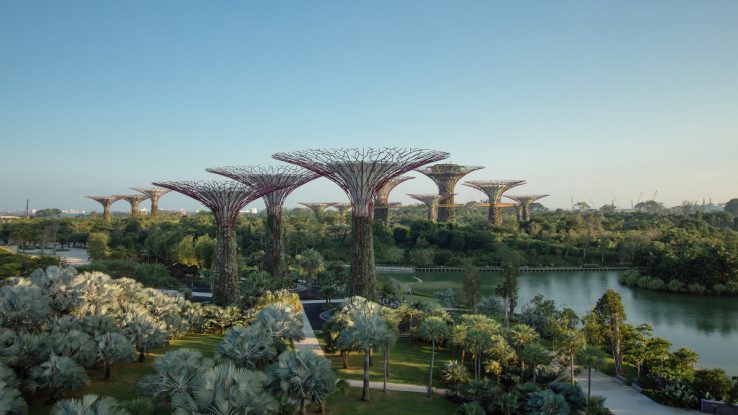
Sponge Cities in China
Similarly, China is building 30 ‘sponge cities’ that can soak up floodwater and prevent disaster. Porous asphalt pavement absorbs the water and retains it, and it can also release the stored water when needed. Hebei City is one of the country’s model sponge cities.
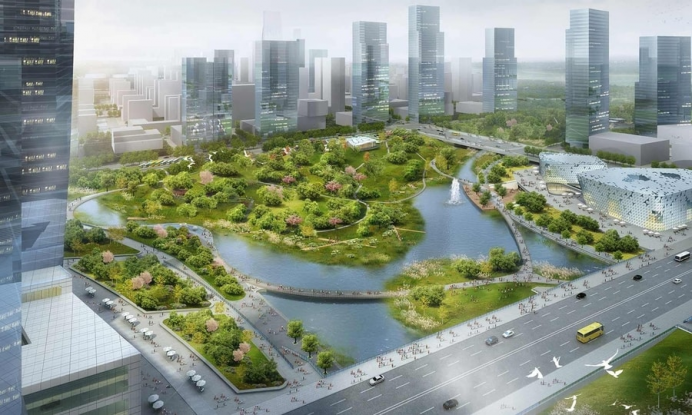
Amsterdam Walkable City
Similarly, Amsterdam has become the bicycle capital of the world. It is equipped with an elaborate network of cycle-paths and lanes, so much so that bikes have become the easiest mode of transport.
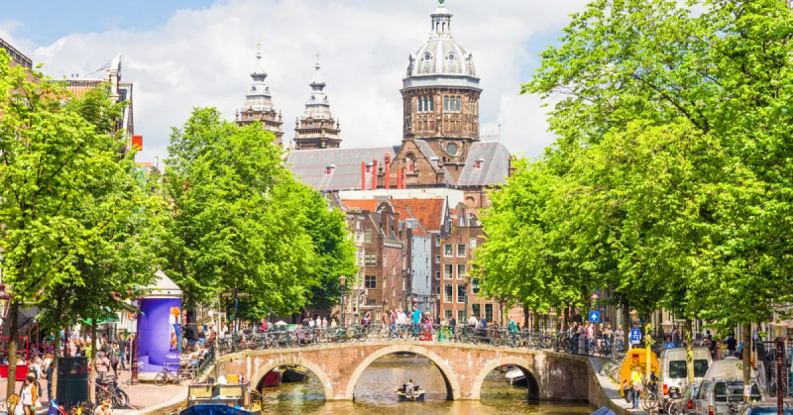
Guangzhou Bus Rapid Transit
In China, the Guangzhou Bus Rapid Transit handles approximately 1,000,000 passenger trips daily, reducing vehicular emission.
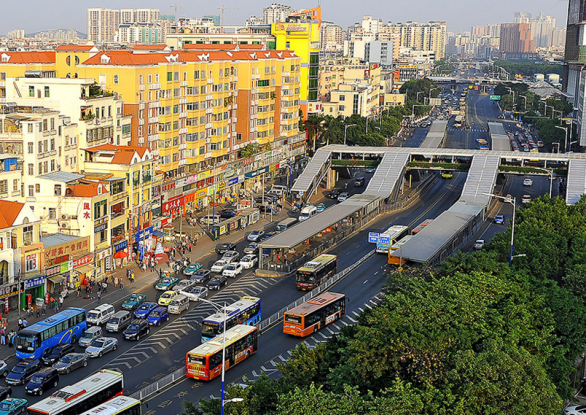
Other countries also need to follow suit to systemically eradicate the climate problem.
Therefore, to secure and make sure the sustainability of cities and future of urbanization world must need to work on the Sustainable Development Goals also known as SDGs along with all the solutions provided above. Achieving these goals will be helpful to tackle all the challenges faced around the world due to urbanization as discussed above and this will save the planet earth from many harmful consequences which can come if sustainable cities are not ensured.
Read More: Pakistan and Emerging Markets In The World Economy – About Pakistan

